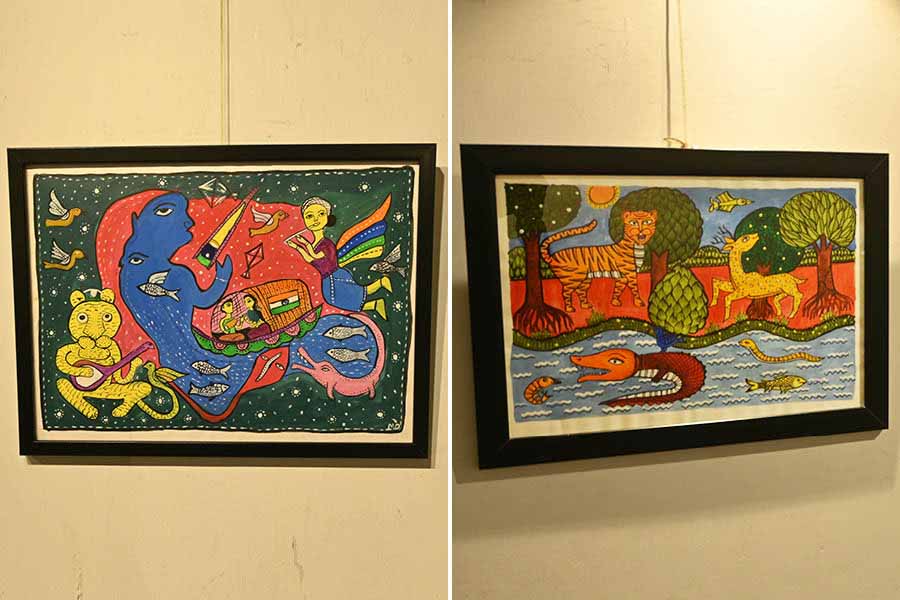Patachitra is the nucleus of Bengal’s artistic wealth. Once, the Sunderbans used to be a hub for this art form. Sadly, over the decades, it had ceased to exist in the region. To revive a patachitra practice in the Sunderbans, the Kolkata Society for Cultural Heritage (KSCH) joined hands with the directorate of forest, South 24-Parganas division, to host an exhibition titled ChitroPot, at Gallery Gold near Rabindra Sarobar from April 9 to 11, showcasing the transformative craft of women from the region to the entire city.
Over the past six months, KSCH trained 40 artists from Jharkhali in the art form. The result was 50 stunning paintings and two long scrolls. “Earlier, we had no work except to catch fish. This initiative has changed our life,” said Devika Barman, one of the women from the village, who was at the exhibition’s inauguration. “At the start, we would merely follow the trainer’s instructions. But as time went on, we let our imagination run wild,” added her friend Anjali Mandal.
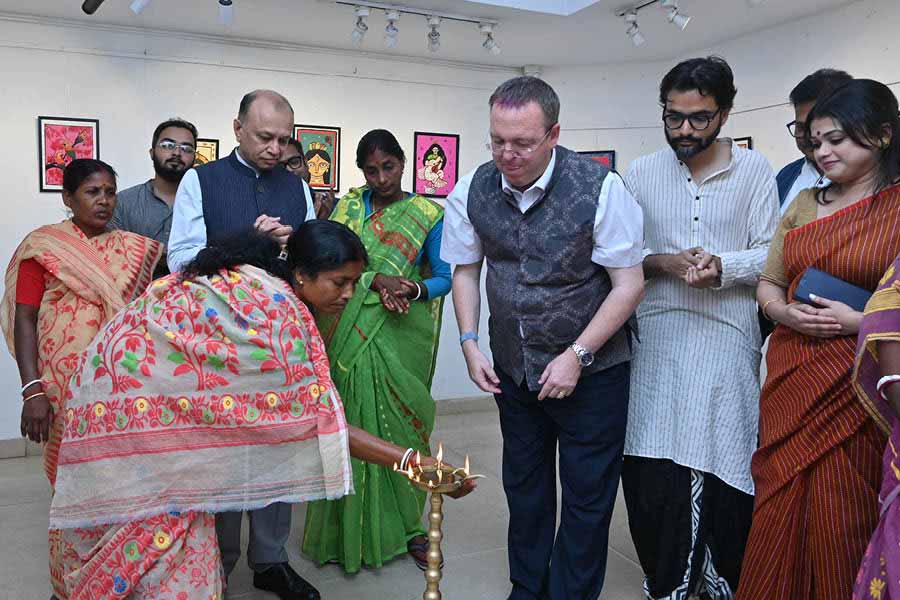
The exhibition was held at Gallery Gold beside Menoka cinema on Abdul Rasool Avenue in the presence of various dignitaries.
These paintings became a means of expression for the women, showcasing the daily lives of people in Sunderbans besides prominent themes from Indian mythology that are usually showcased by patachitra. The exhibition also provided a fascinating peek into the simplicity of the region, along with the challenges its inhabitants face.
The seeds of this collaboration were sown two years ago, when KSCH began work to preserve the patachitra culture in Sunderbans. The organisation pored through many research documents and data from the National Library to understand the region’s relationship with patachitra.
“Back in the day, people lacked access to contemporary tools. Television, radio or movies didn’t exist. Books and poems like Manasamangal, Chandimangal and the Mahabharata were only visible to people through patachitra art. This medium has completely died and we wanted to revive it,” said Sourav Mukherjee, founder director of KSCH.
Once they understood the artistic approach, colour schemes and logistics of the medium, they commenced the training, engaging women who demonstrated an understanding of painting and a willingness to learn. “Our goal with training these women has been to economically empower them through their art,” added KSCH president Arpita Mukherjee. Once a significant repository of paintings was created, it was time to show it up to the public.
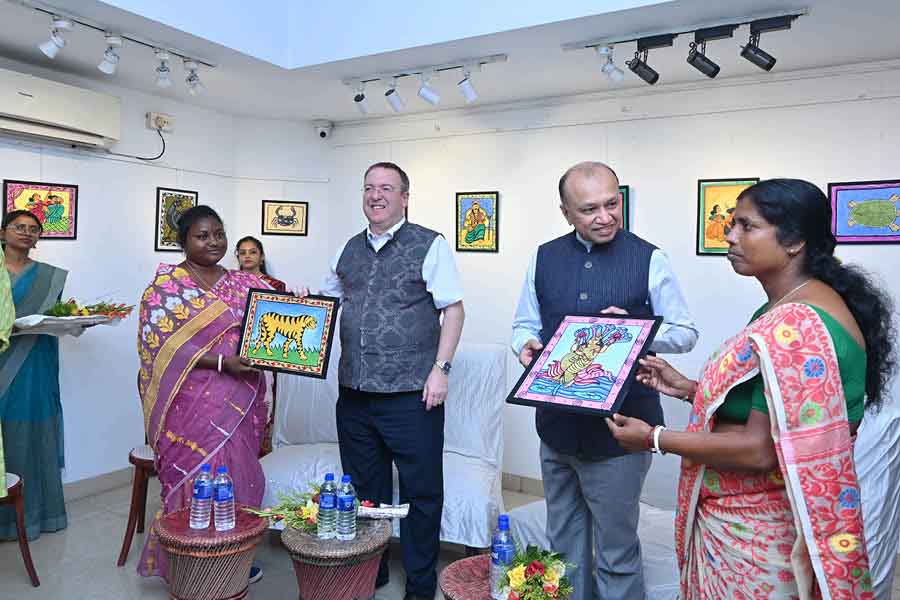
While Devika Barman presented a painting of the majestic Bengal tiger to British deputy high commissioner Andrew Fleming, Durga Mandal presented IFS Niraj Singhal with her interpretation of goddess Manasa.
The ChitroPot exhibition was inaugurated by the British deputy high commissioner to Kolkata, Andrew Fleming, Milan Kanti Mondal, divisional forest officer, South 24-Parganas division and Niraj Singhal, principal chief conservator of forests and heads of forest force of the state government.
Fleming expressed his joy at seeing the financial freedom this artistic skill would provide women from Sunderbans. “If you give these women money, their husbands may pocket it. But if you give them skill, their entire family will benefit. Little by little, this effort can transform their lives,” he said.
Singhal also drew attention to the health benefits of this campaign. “While fishing, these women often had to stand in salt water for long hours, contracting a lot of diseases. If we gainfully employ them in such activities, it not only will boost their income but also significantly reduce their medical costs,” he explained. “These women won’t have to work in the jungle to survive. If we can sustain this, it can be a story of women empowerment, sustainable economy and revival of a lost art form,” summed up Mondal.
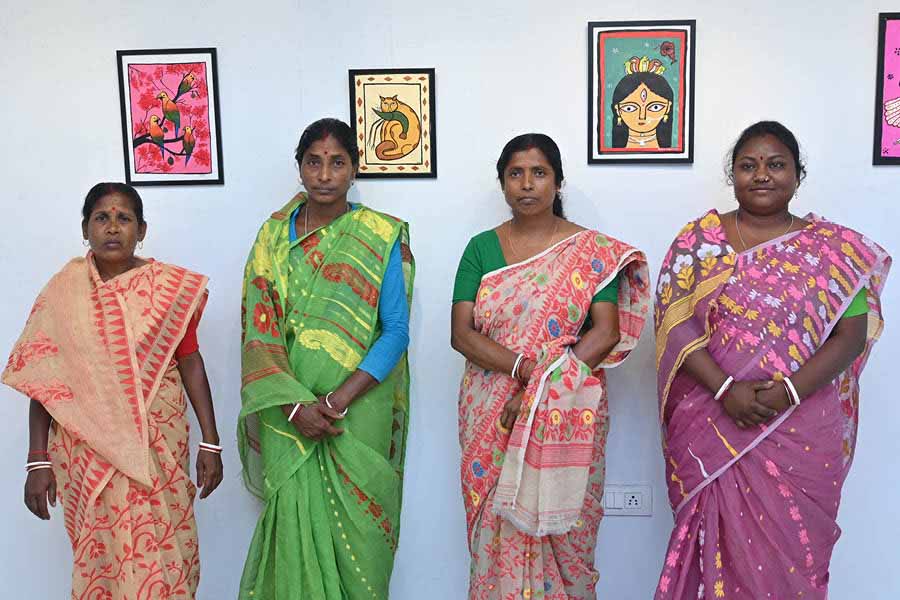
(From left) Niyoti Mandal, Anjali Mandal, Durga Mandal and Devika Barman were there from Jharkhali to present their work.
Over the course of three days, the exhibition sold 16 paintings. Given that patachitra designs can be administered on a variety of materials including paper, cloth, T-shirts, clay pots, kettles and lanterns, the opportunities for these women have only begun.
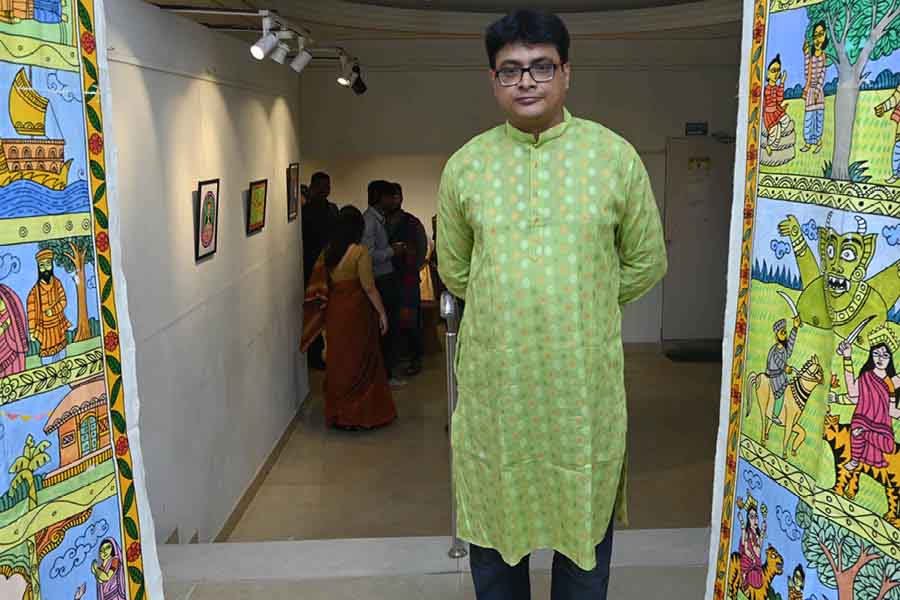
The exhibit was curated by Chinmoy Mukhopadhyay, who trained the artists. ‘These scrolls took two weeks each, and reflect the rich stories of Mansamangal and Bonbibi-r Palagaan,’ he said.
